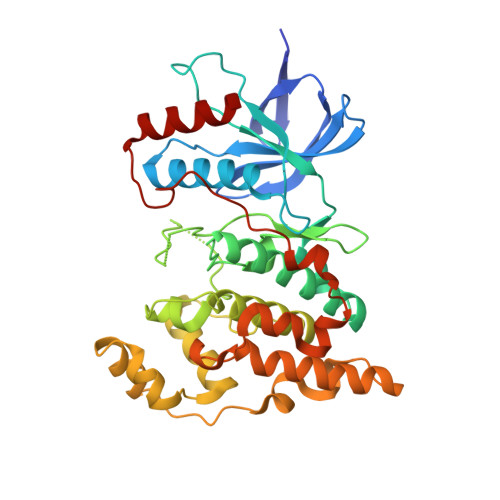Principles and Applications of CF 2 X Moieties as Unconventional Halogen Bond Donors in Medicinal Chemistry, Chemical Biology, and Drug Discovery.
Vaas, S., Zimmermann, M.O., Schollmeyer, D., Stahlecker, J., Engelhardt, M.U., Rheinganz, J., Drotleff, B., Olfert, M., Lammerhofer, M., Kramer, M., Stehle, T., Boeckler, F.M.(2023) J Med Chem 66: 10202-10225
- PubMed: 37487500
- DOI: https://doi.org/10.1021/acs.jmedchem.3c00634
- Primary Citation of Related Structures:
8BZP - PubMed Abstract:
As an orthogonal principle to the established (hetero)aryl halides, we herein highlight the usefulness of CF 2 X (X = Cl, Br, or I) moieties. Using tool compounds bearing CF 2 X moieties, we study their chemical/metabolic stability and their logP/solubility, as well as the role of XB in their small molecular crystal structures. Employing QM techniques, we analyze the observed interactions, provide insights into the conformational flexibilities and preferences in the potential interaction space. For their application in molecular design, we characterize their XB donor capacities and its interaction strength dependent on geometric parameters. Implementation of CF 2 X acetamides into our HEFLibs and biophysical evaluation (STD-NMR/ITC), followed by X-ray analysis, reveals a highly interesting binding mode for fragment 23 in JNK3, featuring an XB of CF 2 Br toward the P-loop, as well as chalcogen bonds. We suggest that underexplored chemical space combined with unconventional binding modes provides excellent opportunities for patentable chemotypes for therapeutic intervention.
- Laboratory for Molecular Design & Pharmaceutical Biophysics, Institute of Pharmaceutical Sciences, Department of Pharmacy and Biochemistry, Eberhard Karls Universität Tübingen, 72076 Tübingen, Germany.
Organizational Affiliation:























